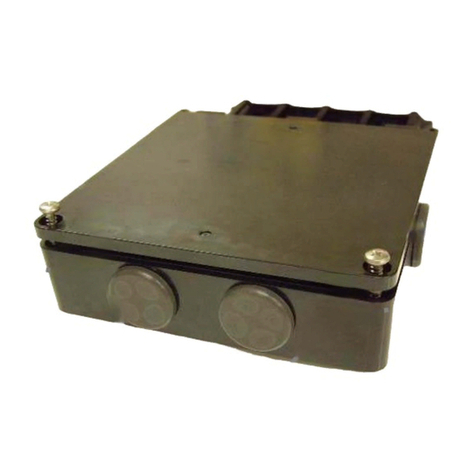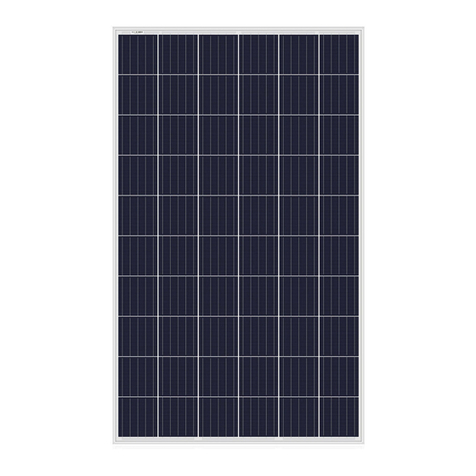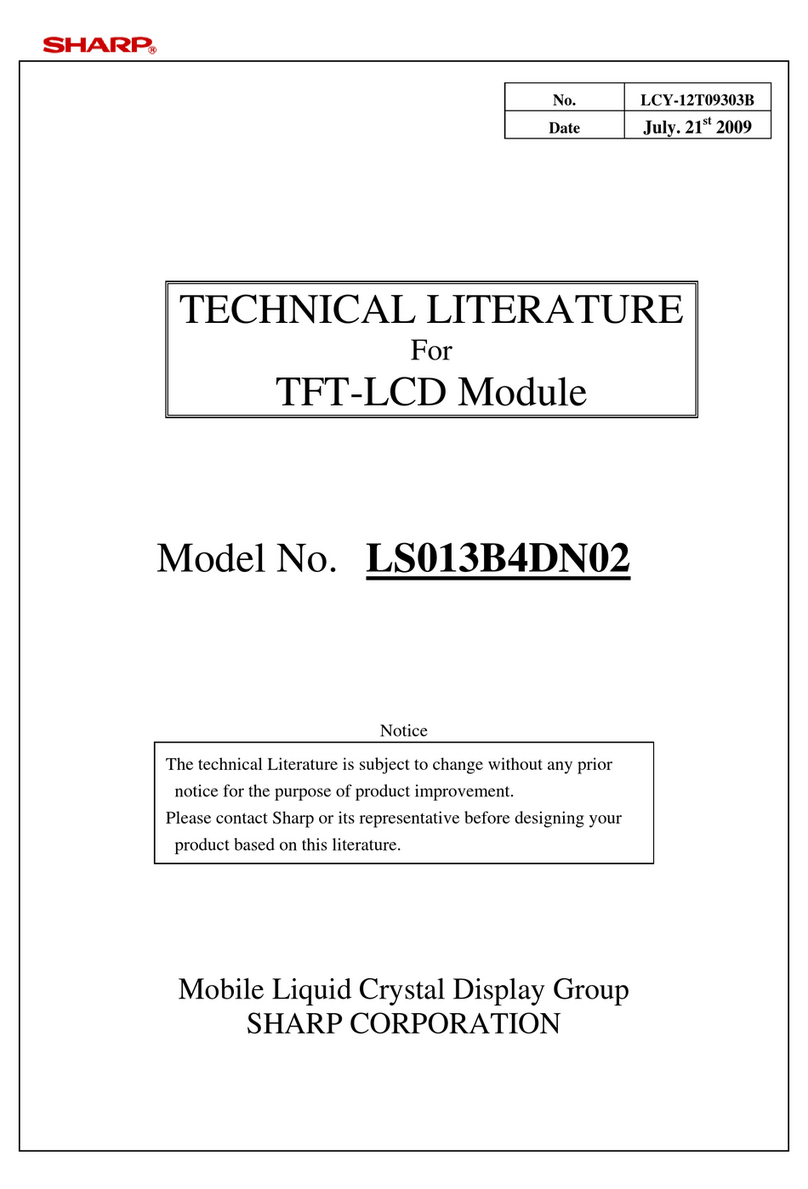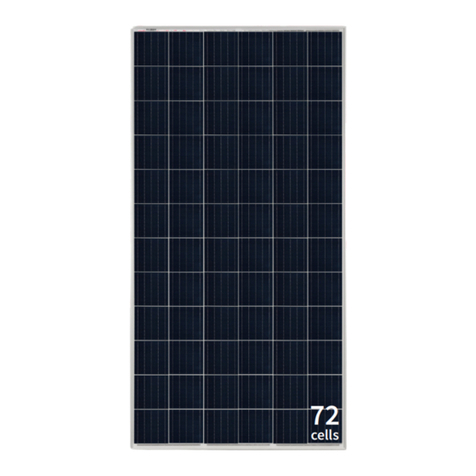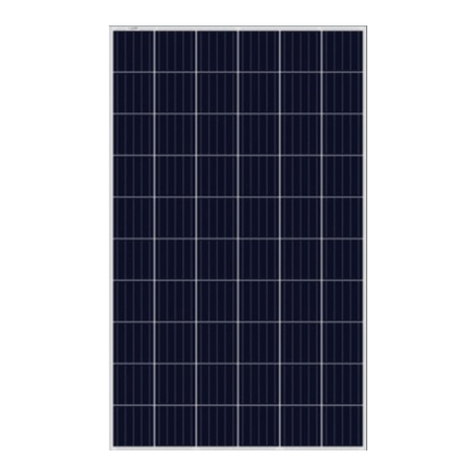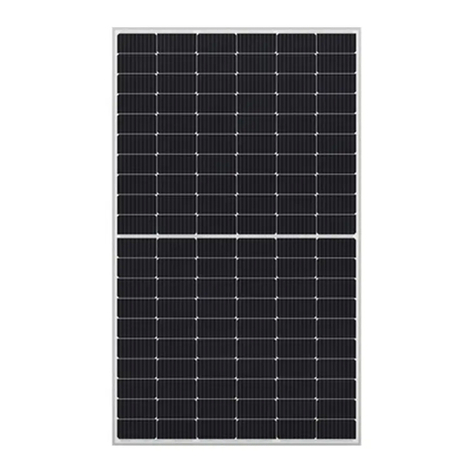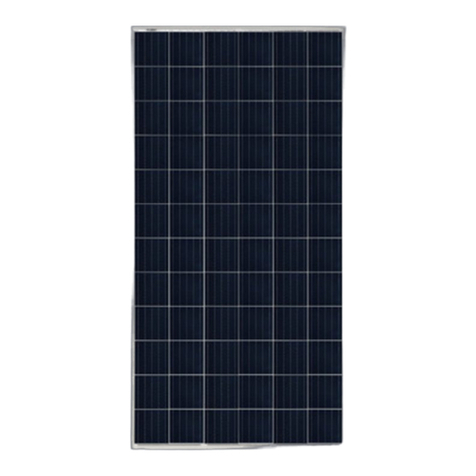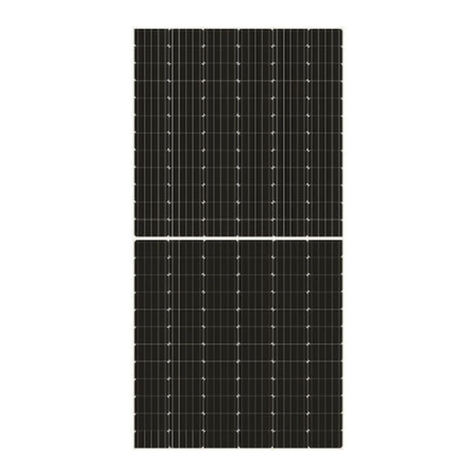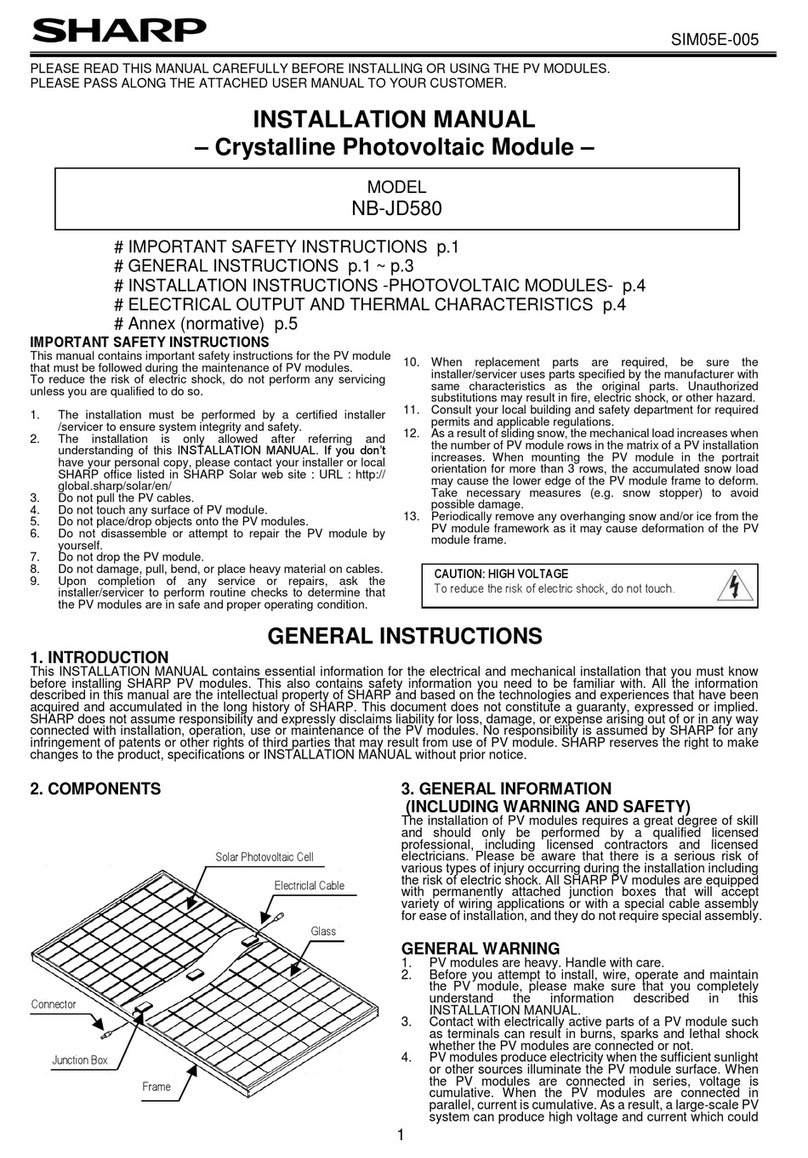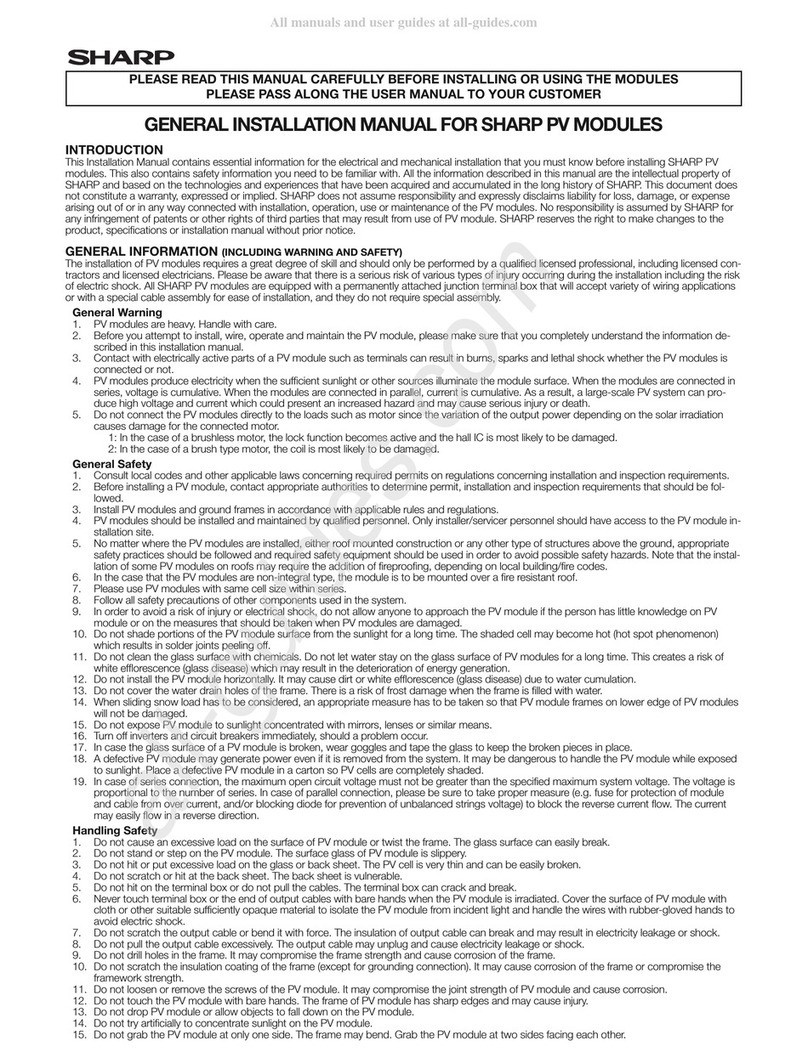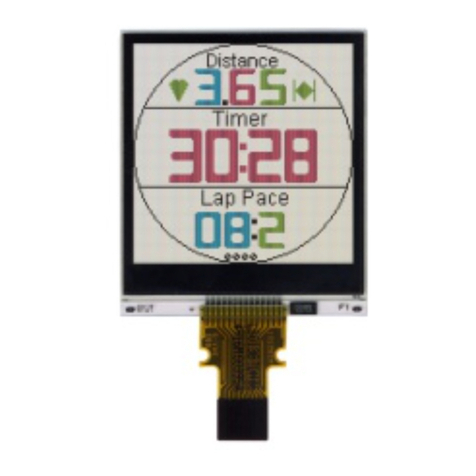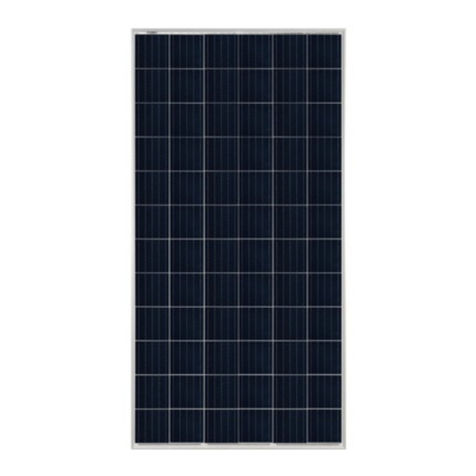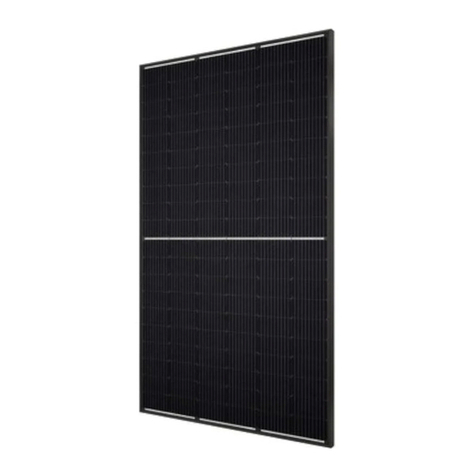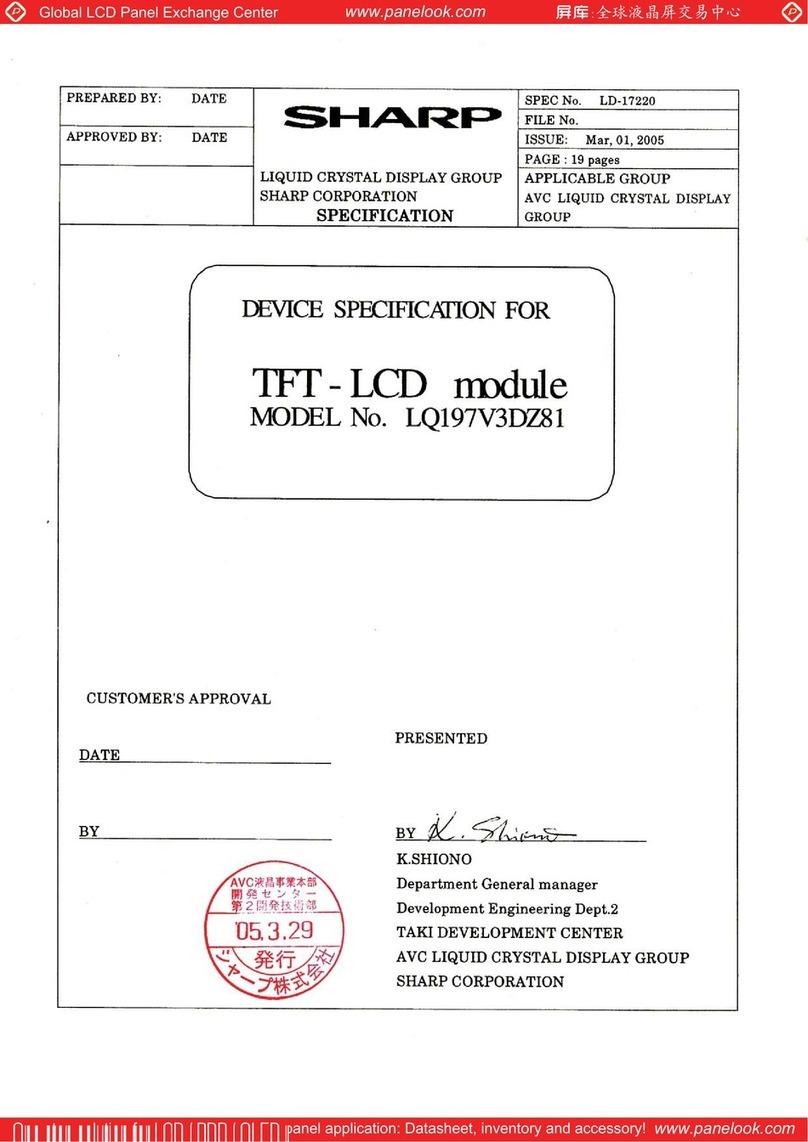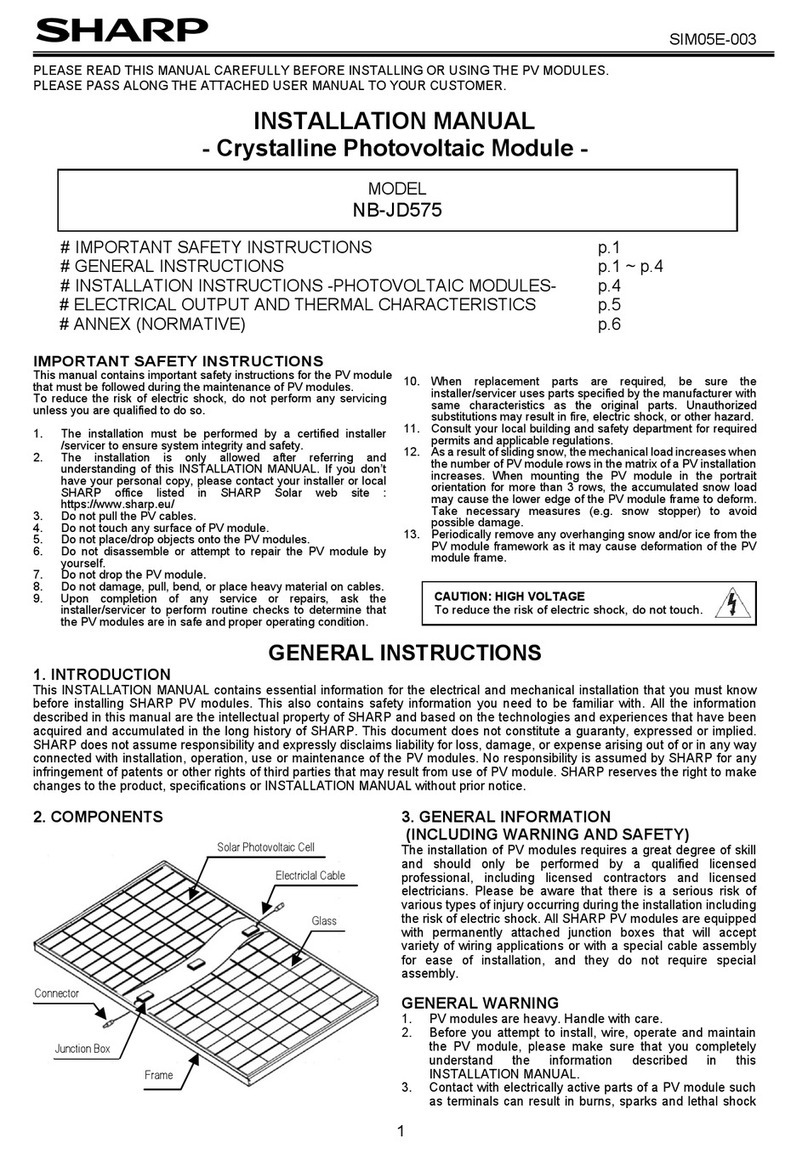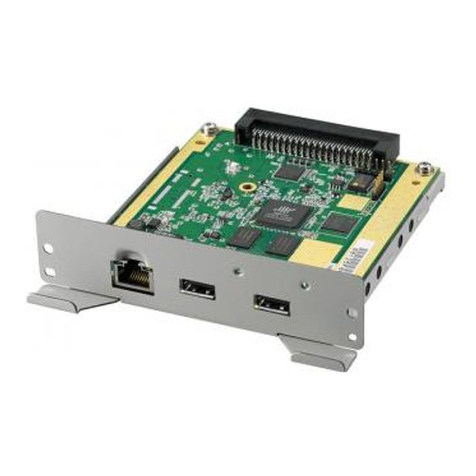
SPEC No.
LCP-2110019B
MODEL No.
LS013B7DH01
PAGE
2
[For handling and system design]
(1) Handle with care as glass is used in this LCD panel. Dropping or contact against hard object may cause cracks or
chips.
(2) Be careful to handle this LCD panel in order to avoid injury yourself by panel`s edge as this panel is made of glass
and might be a sharp edge.
(3) Do not scratch the surface of the polarizer as it is easily damaged.
(4) Water droplets on the polarizer must be wiped off immediately as they may cause color changes, or other defects if
remained for a long time.
(5)Do not leave the LCD panel in direct sun or under ultraviolet ray.
(6) To clean LCD panel surface, wipe clean with absorbent cotton or soft cloth. If further cleaning is needed, use IPA
(isopropyl alcohol) and wipe clean lightly on surface only. Do not use organic solvents as it may damage the LCD
panel terminal area which uses organic material. Also, do not directly touch with finger. When the terminals cleaning
are needed, those should be wiped by a soft cloth or a cotton swab without directly touching by hand.
(7) Do not expose gate driver, etc. on the panel (circuit area outside panel display area) to light as it may not operate
properly. Design that shields gate driver, etc. from light is required when mounting the LCD module.
(8) To avoid circuit failure, do not touch panel terminal area.
(9) Support for the LCD panel should be carefully designed to avoid stress that exceeds specification on glass surface.
(10) When handling LCD module and assembling them into cabinets, be noted that storage in the environment of
oxidization or deoxidization gas and the use of such materials as reagent, solvent, adhesive, resin, and etc. which
generate these gasses, may cause corrosion and discoloration of LCD modules.
(11)To avoid picture uniformity failure, do not put a seal or an adhesive material on the panel surface.
(12) Do not use chloroprene rubber as it generates chlorine gas and affects reliability in LCD panel connective area.
(13) Protective film is attached to the surface of polarizer on LCD panel to prevent scratches or other damages.
Remove this protective film before use. In addition, do not attach the protective film which is removed from LCD
module again. When the LCD panel which has the reattached protective film is needed to storage for a long time, the
polarizer might have a damage with picture quality failure.
(14) Panel is susceptible to mechanical stress and such stress may affect the display. Place the panel on flat surface
to avoid stress caused by twist, bend, etc.
(15) When transporting LCD panels, secure them in LCD panel tray to avoid mechanical stress. The tray should be
conductive to protect LCD panels from static charge.
Material used in set or epoxy resin (amine type hardening agent) from packaging, and silicon adhesive
(dealcoholized or oxime) all release gas which may affect quality of polarizer. Do confirm compatibility with user
materials.
(16) As this LCD module is composed electronic circuits, it is sensitive to electrostatic discharge of 200V or more.
Handle with care using cautions for the followings:
zOperators
Operators must wear anti-static wears to prevent electrostatic charge up to and discharge from human
body.
